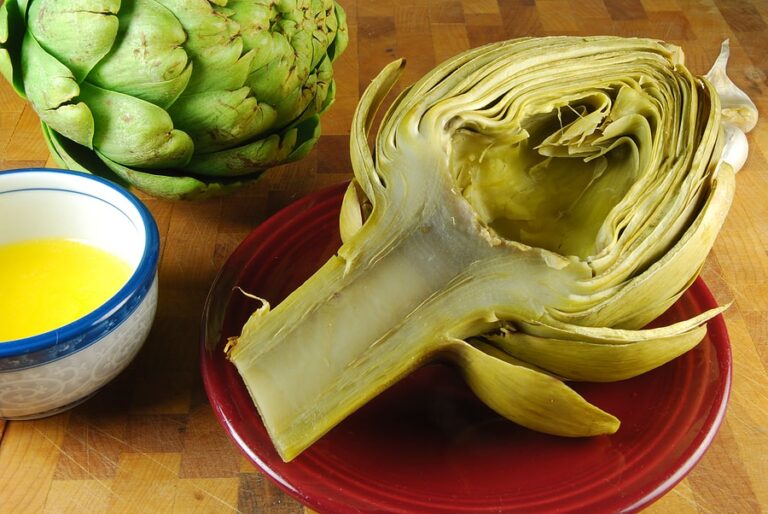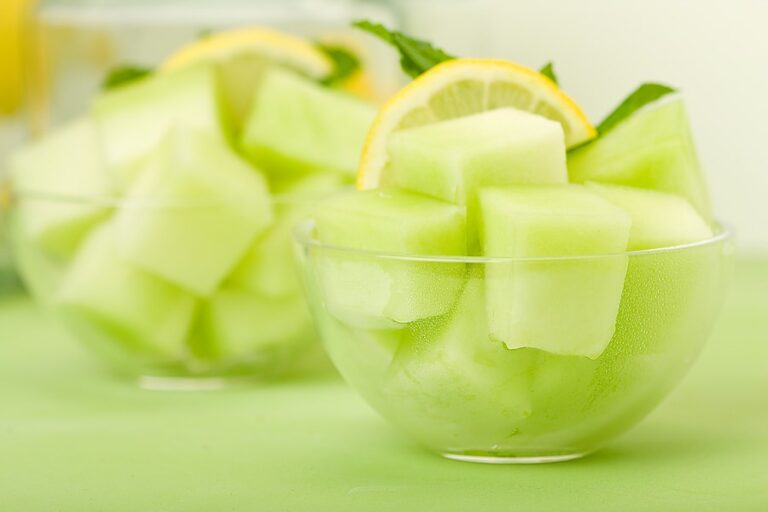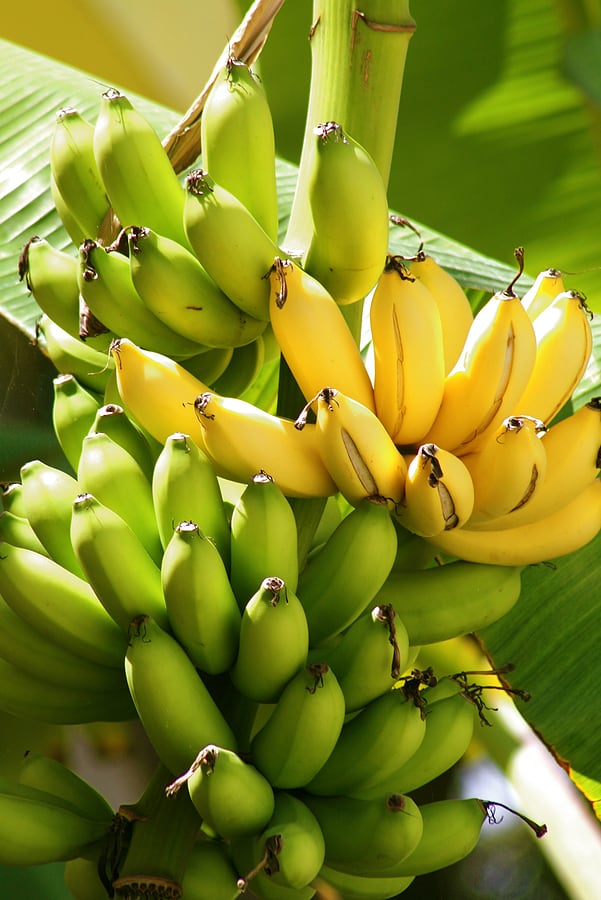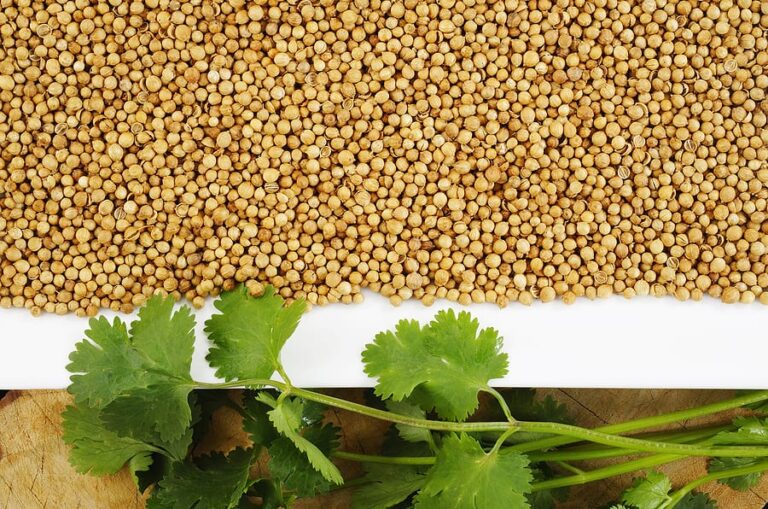Ways to Serve Pineapple
The flesh of the pineapple is sweet and juicy and is best eaten raw in slices, wedges, or cubes.
- Cut a fresh pineapple in half lengthwise, leaving on the top leaves. Cut out the core and carefully cut the flesh away from the rind in one piece. Slice the flesh into wedges. Refill the shell. Sprinkle with sugar or kirsch. Serve plain or garnish with cherries, whole strawberries, or sprigs of mint.
- Pineapple can be added to fruit salads and chicken and turkey salads.
- Crush 3 tablespoons of fresh pineapple and mix with a half cup of honey, a quarter cup of lemon juice, and a quarter teaspoon of salt. Mix, chill, and shake thoroughly before dressing a fruit salad.
- Pineapple also will bring a sweet-tart flavor to savory entrees. Grill pineapple slices and serve with roast pork or bake and serve with ham.
- Place fresh pineapple slices into a shallow baking pan not allowing the slices to overlap one another. Place over very low heat or in the oven and simmer for about two hours until the pineapple is almost transparent. Garnish the center of each with a glacéed cherry and serve with ham
- Add sweetness and texture to savory dishes.
- Use chunks in fruit, poultry, fish, or smoked meat salads.
- Use as a sweetener for fish and soup.
- Grill and serve with roast pork or duck.
- Bake or fry with ham.
- Thread chunks on skewers and grill with lamb or seafood.
- Pair with cubes of smoked meat or other fruit to serve as an appetizer.
- Use in curries.
- Use chunks with hot cheese dip.
- Broil slices with brown sugar and a few drops of rum.
- Use diced in cream pies and cakes.
- Spoon chunks over lime, lemon, or pineapple sherbet.
- Drizzle with crème de menthe and serve with ice cream.
- Use to make jam and juice.
Pineapple harvest season
The peak season for pineapple is late spring to mid-summer.
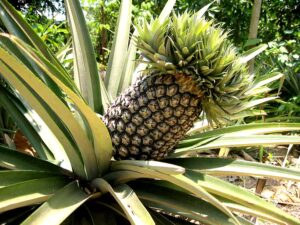
How to choose pineapple
Select a pineapple that is plump, large, heavy for its size, and slightly soft to the touch, with fresh green leaves. Smell the stem end of the pineapple; it should have a sweet aroma. You can not tell if a pineapple is ripe by the color of its skin.
Avoid pineapples with soft spots, dark eyes, dry brown leaves, or an unpleasant odor. They will not be fresh and will have an acidic taste.
Amount. A medium size pineapple (3 to 3½ pounds) will yield 3 cups of cubed fruit.
How to store pineapple
Pineapples must be harvested ripe; its starch will not turn to sugar off the tree. A picked pineapple may get softer and juicer, but it will not get sweeter.
- An uncut ripe pineapple will keep at room temperature uncovered out of direct sun for up to 2 days. A pineapple will begin to ferment in direct sunlight. Cut pineapple should be tightly sealed or wrapped and will keep in the refrigerator for 3 days.
- Pineapples can develop dark spots from temperature changes.
- To freeze pineapple, cut the flesh into chunks and freeze in light syrup.
How to prepare pineapple
Cut off the leafy top and cut a thick slice from the bottom. Stand the fruit on end. Pare the skin from the top downward with a curved knife. Cut the flesh into quarters or wedges and remove the core. You can then cube or dice or cut the flesh into chunks. To make round slices, slice the pineapple across and remove the core with a small round cookie cutter.
Cooking pineapple
Pineapple can be baked, grilled, poached, and sautéed.
- Baking. Quarter cut fruit from the rind, remove core; glaze and bake until hot and tender (about 20 minutes).
- Grilling. Peel and cut into ¾-inch thick slices. Grill until hot and streaked with brown (6 to 8 minutes).
- Poaching. Cut into ½-inch thick slices. Simmer in poaching liquid until tender when pierced (about 5 minutes).
- Sautéing. Peel, core, and cut into 1-inch cubes. Sauté until hot and tender when pierced (about 5 minutes).
Pineapple nutrition
Pineapples are a good source of vitamin C. A 3½ ounce serving of pineapple contains 52 calories.
Pineapples contain the enzyme bromelin which is an aid to digestion. Bromelin does not allow gelatin to set so do not use pineapples in gelatin salads or desserts.
Common pineapple varieties
- Smooth Cayenne. A large sweet, juicy, golden-yellow fleshed pineapple; the most widely grown and most popular with the classic cylindrical pine cone shape and long spear-like fronds. Usually weighs 5 to 6 pounds (2.5-3 kg). Grown mostly in Hawaii but also in Australia, the Philippines, and South Africa. Not spiny.
- Hilo. A compact version of smooth Cayenne. Weighs 2-3 pounds (1-1.5 kg).
- Esmeralda. A Cayenne-type pineapple from Mexico.
- Natal Queen. A small, yellow-fleshed pineapple that is firmer, slightly drier than, and not as sweet as the Cayenne. Usually weighs 2 to 3 pounds (1-1.5 kg). Best fresh but keeps well. Spiny leaves.
- Red Spanish. A medium size pineapple with purplish skin and a squarish shape. Pale-colored flesh and very fragrant. Usually weighs 2 to 4 pounds (1-2 kg). Grown in Puerto Rico, Florida, and Cuba. Spiny leaves.
- Pernambuco. A tender, sweet medium-sized pineapple with whitish or yellow flesh. Excellent for eating fresh. Usually weighs 2 to 4 pounds (1-2 kg). Spiny leaves.
- Kona Sugarloaf. Very sweet, white-fleshed pineapple that is not woody at the center. Cylindrical and weighs from 5 to 6 pounds (2.5-3 kg).
About pineapple
Pineapples grow in the dry tropics on squat herbaceous plants that stand just 3 feet tall and about 3 feet wide. The average pineapple is 4 to 8 inches long though some grow much larger.
The pineapple is covered with thick, hard floral bracts, or leaf-like petals called “eyes” that range in color from dark green to yellow to orange-yellow to reddish. Beneath each bract or eye is a berry-like individual fruit, the sweet pale yellow to white flesh we eat. A pineapple is actually a cylindrical composite fruit formed from 100 to 200 of these berry-like fruits which are fused together off of the pineapple core. The small individual fruit merge into one large composite fruit.
Each of these composite fruits grows from a thickened stalk of the plant. Only one composite fruit—which we call the pineapple–grows from a single stalk but the same plant may produce more than one fruiting stem. The average pineapple weighs from 4 to 9 pounds but some grow to as large as 16 to 20 pounds. From the crown of each fruit grows long, slender spiny leaves.
The pineapple is native to Brazil but was growing throughout tropical South and Central America and the West Indies when Columbus arrived in 1493. Spanish explorers named the fruit piña for its resemblance to a pinecone. That inspired the English name pineapple. The Brazilian Indian name for pineapple is nana which means “excellent fruit”.
The Spaniards brought the pineapple to Europe from South America in the sixteenth century and took the fruit to Hawaii in the late eighteenth century.
Today, pineapples are mainly grown in Hawaii, Honduras, Mexico, the Dominican Republic, and Costa Rica.
The botanical name for the pineapple is Ananas comosus.
Related article:
Articles of interest:
Best Herbs for Container Growing
Garden Planning Books at Amazon:
- Vegetable Garden Almanac & Planner
- Kitchen Garden Grower’s Guide Vegetable Encyclopedia
- Vegetable Garden Grower’s Guide
- Tomato Grower’s Answer Book
More kitchen tips:
Bring your harvest to the table. Kitchen prep tips and easy recipes for the vegetables you grow. Click below for vegetable prep and recipes you can use now.
- Almonds
- Apples
- Apricot
- Aprium
- Artichoke
- Arugula
- Asparagus
- Avocado
- Bamboo Shoots
- Banana
- Basil
- Beans, Dried
- Beans. Long
- Beans, Shell
- Beans, Snap
- Beets
- Bitter Melon
- Blackberry
- Bok Choy
- Broccoli
- Broccoli Raab
- Brussels Sprouts
- Cabbage
- Cardoon
- Carrots
- Cauliflower
- Celeriac
- Celery
- Chard
- Chayote Squash
- Cherimoya
- Cherries
- Chestnut
- Chickpea
- Chinese Cabbage
- Chives
- Cilantro
- Citron
- Clementine
- Collards
- Coriander
- Corn, Sweet
- Corn, Baby
- Corn Salad, Mache
- Cranberry
- Cress
- Cucumber
- Daikon
- Dandelion
- Dill
- Eggplant
- Endive, Belgian
- Endive and Escarole
- Fava Beans
- Fig
- Florence Fennel
- Garlic
- Ginger
- Grapefruit
- Grapes
- Guava
- Horseradish
- Jerusalem Artichoke
- Jicama
- Jujube
- Kale
- Kiwifruit
- Kohlrabi
- Kumquat
- Leeks
- Lemongrass
- Lemons
- Lettuce
- Lime
- Mache (Corn Salad)
- Mandarin Orange
- Mango
- Maple Syrup
- Marjoram
- Melons
- Michihili
- Mint
- Mizuna
- Mushrooms
- Mushrooms, Cremini
- Mustard Greens
- Napa Cabbage
- Nectarine
- Okra
- Olives
- Olive oil
- Onions
- Oranges
- Oregano
- Parsley
- Parsley Root
- Parsnips
- Passion Fruit
- Pawpaw
- Peaches
- Pears
- Peas, Garden Snap
- Peas, Snow
- Pei Tsai
- Peppers, Chili
- Peppers, Sweet
- Persimmon
- Pineapple
- Pineapple Guava
- Plantain
- Plums
- Pluots
- Pomegranate
- Potatoes
- Prickly Pear
- Pumpkin
- Quince
- Radicchio
- Radishes
- Raspberries
- Rosemary
- Rhubarb
- Rutabaga
- Sage
- Salsify
- Sauerkraut
- Savory
- Shallots
- Sorrel
- Spinach
- Squash, Summer
- Squash, Winter
- Strawberries
- Sunchokes
- Sunflower
- Sweet Potato
- Swiss Chard
- Tangerine
- Taro
- Tarragon
- Thyme
- Tomatillo
- Tomato
- Turnip
- Turnip Greens
- Yams


